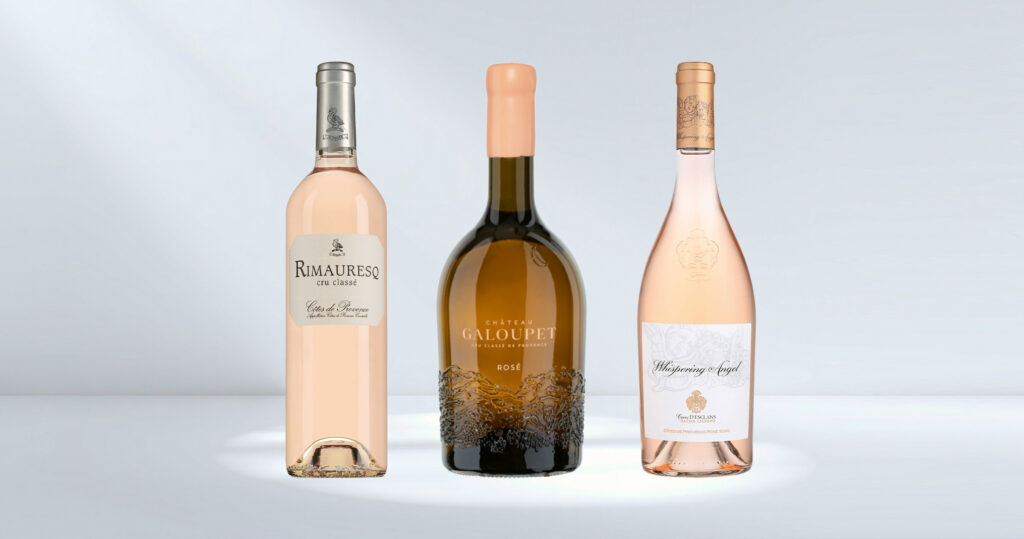More of what? More depth, more body, more intensity?
Rosé wines often carry a reputation that unfairly relegates them to mere summer refreshment. But they are so much more. They whisper their aromas rather than shouting them. They seduce with finesse, not dominance. A great rosé is like a quiet conversation—subtle, layered, sophisticated. And yet, the same questions keep coming up, as mentioned in the title and subtitle.
The Eternal Struggle for Recognition
I’m no stranger to the skepticism that greets my enthusiasm for rosé. Even among seasoned wine lovers with refined palates, the prejudice persists: Rosé can’t be truly fine—at best, it’s “nice.” But I can’t let this notion go unchallenged. I firmly believe—and always will—that rosé can be elegant, noble, and of the highest quality.
The Challenge: Rosé in Practice
I’ve made it my mission to convince fellow wine lovers of rosé’s versatility—not through words but through experience. This time, I had support from Joanna (my wife), who shares my love for rosé and prepared a menu that was both complementary and challenging. To match, I selected a trio from Provence, the spiritual home of rosé—the stage was set for the ultimate rosé showdown.

Path to Glory or a Trip to the Guillotine?
First Course: Rimauresq Cru Classé Rosé
An aperitif should be refreshing, inviting, and not too heavy—exactly what Rimauresq delivered. Its crisp freshness and moderate alcohol made it the perfect opener. We paired it with grilled zucchini rolls with thyme and a spicy cream cheese filling with diced peppers. The rosé harmonized beautifully with the thyme, elevating the spiced filling to another level. And suddenly—no objections, no skeptical looks!
“1:0 for rosé.”
Second Course: Château du Galoupet Cru Classé Rosé
This choice for the sea bream was no coincidence. If the French adore this pairing, they must be onto something. And indeed—the pale pink elegance, gentle acidity, and delicate fruit notes of Château du Galoupet complemented the Mediterranean-spiced fish fillet perfectly. The enthusiasm at the table was palpable!
“2:0 for rosé.”
Final Course: Château d’Esclans Whispering Angel
A bold experiment: rosé with Arabic-Asian spiced lamb? Yet, this wine has both power and structure—enough to stand up to cumin and coriander. The expressions on my guests’ faces after the first sip said it all.
“You can hear the angels whisper,” someone at the table murmured. A moment to remember.
Final score? “3:0 for rosé.”
The Verdict: Rosé Is So Much More
By the end of the evening, everyone agreed: rosé is far more than just a summer wine. But why does it even need defending? Why the persistent demand for “more”—more depth, more body, more intensity? Perhaps because rosé is subtle. It doesn’t seek attention; it requires nuanced appreciation.
A high-quality rosé is on par with great whites and reds—when sourced from the right terroir, made from selectively harvested grapes, and vinified with care and precision. Yet, it is still too often dismissed as playing a supporting role, a misconception shared even by critics who view rosé as merely a summer drink.
The Next Experiment Awaits
But my mission is far from over. Next time, I will present a selection of German rosés—both single-varietal and blends—paired with an array of bold Asian dishes. Conventional wisdom suggests that only powerful whites or reds pair well with spicy food. But my experiences from wine trips to China have shown otherwise. The complexity of flavors requires wines that can play along. And I am convinced—rosé can.
My wine friends remain skeptical, or at least they pretend to be—perhaps just to experience another revelation. Either way, their “doubt” makes the challenge even more exciting.
Where to Find These Wines
All the wines mentioned here are available online.
• Rimauresq Cru Classé Rosé, price range: €15 to €20
• Château du Galoupet Cru Classé Rosé, approx. €55
• Château d’Esclans Whispering Angel, approx. €17 to €20
– – –
Photo Credit (Titel): © Adobe Stock/Fenea Silviu
Photo Credit (Text): © Arthur Wirtzfeld